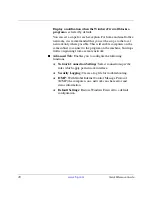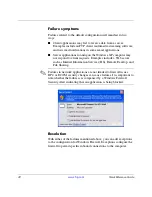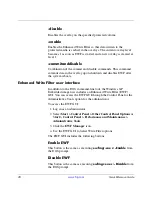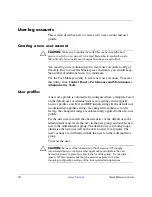
Quick Reference Guide
www.hp.com
31
Saving files
Ä
CAUTION:
The thin client uses an embedded operating system with a
fixed amount of flash memory. HP recommends that you save files that you
want to retain on a server rather than on your thin client. Be careful
of application settings that write to the C drive, which resides in flash
memory (in particular, many applications by default write cache files
to the C drive on the local system). If you
must
write to a local drive,
change the application settings to use the Z drive. To minimize writing to
the C drive, you should update configuration settings as described in
“User log accounts” on page 32
.
Mapping network drives
You can map network drives if you log on as either Administrator or
User.
To keep the mappings after the thin client is rebooted:
1. Disable the write filter cache during the current boot session or
issue the
-commit command.
2. Select the
Reconnect at Logon
check box.
Because a user logon cannot disable the write filter cache, you can
retain the mappings by logging off the user (do not shut down or
restart) and logging back on as Administrator, and then disabling the
write filter.
You can also assign the remote home directory by using a user
manager utility or by other means known to administrators.
Roaming profiles
Write roaming profiles to the C drive. The profiles need to be limited
in size and will not be retained when the thin client is rebooted.
✎
For roaming profiles to work and be downloaded, there must be
sufficient flash space available. In some cases it may be necessary to
remove software components to free up space for roaming profiles.





















